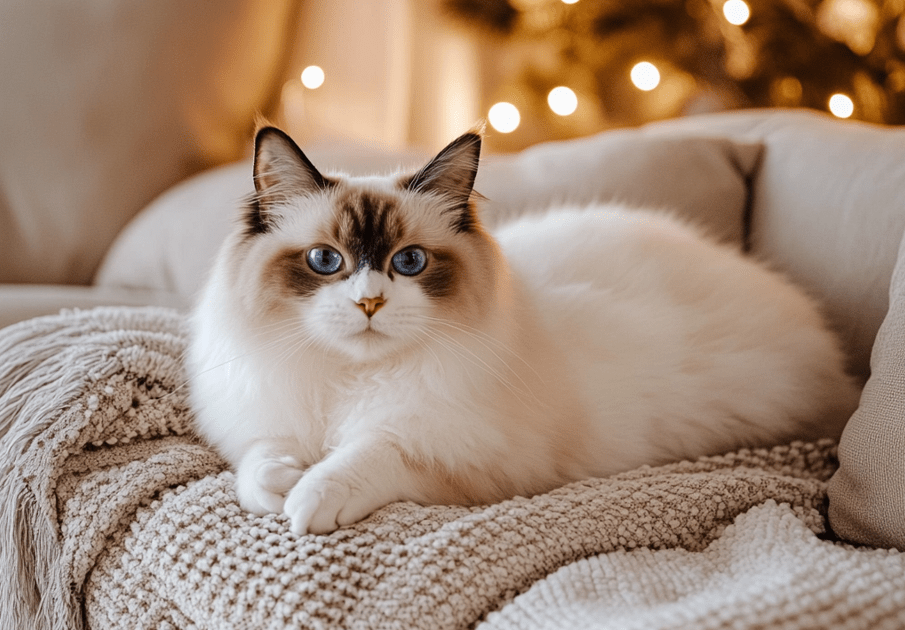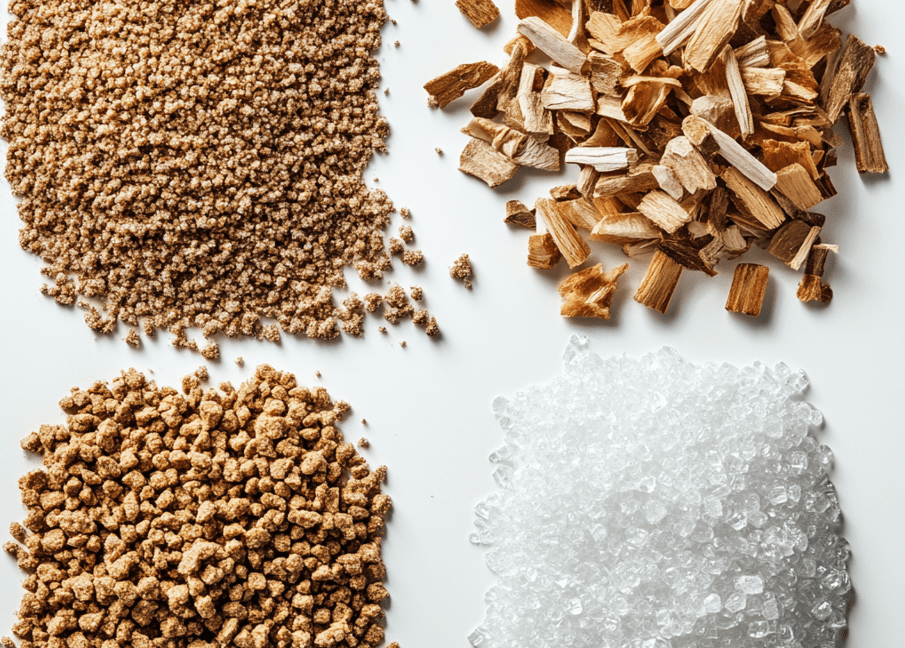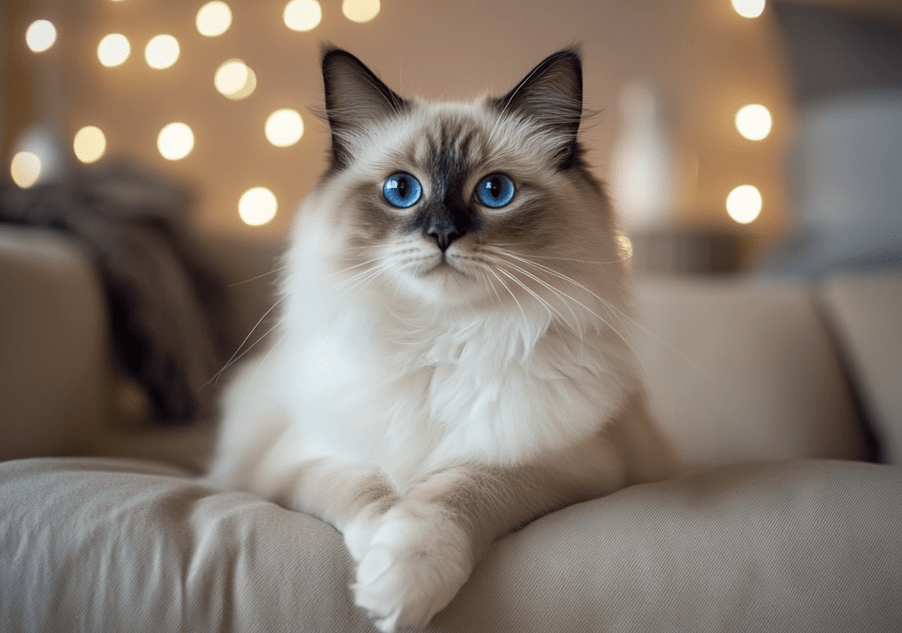
Ragdoll cats, with their gentle demeanor and striking blue eyes, are cherished companions. However, their curious nature can lead them into trouble in your home. To protect your Ragdoll cat from household hazards, it’s essential to identify and mitigate risks like toxic plants, dangerous foods, and unsafe spaces. This comprehensive guide outlines seven actionable strategies to create a safe environment for your feline friend, ensuring their health and happiness. From securing toxic substances to cat-proofing your home, we’ll cover everything you need to keep your Ragdoll safe.
Why Ragdolls Are Vulnerable to Household Hazards
Ragdolls are known for their docile, trusting personalities, which can make them less cautious than other breeds. Their large size (10-20 pounds) and playful curiosity often lead them to explore every nook and cranny, increasing their exposure to potential dangers. Common household hazards include:
Toxic Substances: Cleaning products, medications, and certain foods can be deadly.
Physical Dangers: Electrical cords, small objects, and high ledges pose risks.
Environmental Threats: Open windows, hot surfaces, and toxic plants can harm your cat.
By understanding these risks, you can take proactive steps to protect your Ragdoll cat from household hazards and create a safer home.
1. Identify and Secure Toxic Substances
Household chemicals and medications are among the most dangerous hazards for Ragdolls. Their curious nature may lead them to ingest or come into contact with harmful substances.
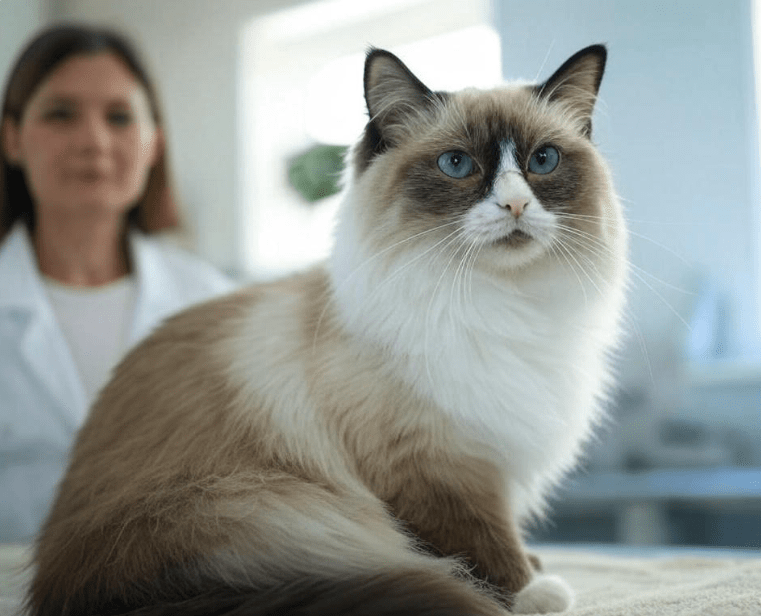
Common Toxic Substances
Cleaning Products: Bleach, ammonia, and pine-based cleaners can cause burns or poisoning if ingested.
Medications: Human drugs like ibuprofen, acetaminophen, and antidepressants are toxic to cats.
Antifreeze: Even small amounts can be fatal due to its sweet taste.
Pesticides and Rodenticides: These can poison your cat directly or through contaminated prey.
How to Protect Your Ragdoll
Store Securely: Keep all chemicals and medications in locked cabinets or high shelves your Ragdoll can’t access.
Use Pet-Safe Alternatives: Opt for non-toxic cleaning products, like vinegar-based solutions or brands labeled as pet-safe.
Clean Spills Immediately: Wipe up any chemical spills to prevent your cat from walking through or licking them.
Dispose Properly: Seal and discard used containers in a secure trash bin to avoid accidental exposure.
By securing toxic substances, you significantly reduce the risk of poisoning, helping to protect your Ragdoll cat from household hazards.
2. Eliminate Toxic Plants
Many common houseplants are toxic to cats, and Ragdolls may nibble on greenery out of curiosity or boredom.
Dangerous Plants
Lilies: Even small amounts of lilies (including pollen) can cause kidney failure in cats.
Pothos: Causes oral irritation and vomiting.
Sago Palm: Highly toxic, leading to liver failure.
Aloe Vera: Can cause vomiting and lethargy.
Safe Alternatives
Replace toxic plants with cat-friendly options like:
Catnip: Stimulates play without harm.
Spider Plant: Non-toxic and hardy.
Boston Fern: Safe and lush.
Protective Measures
Remove Toxic Plants: Relocate dangerous plants to outdoor areas or give them away.
Elevate Plants: Place non-toxic plants on high shelves or in hanging baskets.
Provide Cat Grass: Offer wheatgrass or oat grass to satisfy your Ragdoll’s chewing instincts.
Monitor Behavior: Watch for signs of plant ingestion, like vomiting or lethargy, and contact your vet immediately if noticed.
By eliminating toxic plants, you create a safer indoor environment for your Ragdoll.
3. Keep Harmful Foods Out of Reach
Ragdolls, like all cats, can be drawn to human foods, but many are toxic or dangerous.
Foods to Avoid
Chocolate: Contains theobromine, which can cause heart issues and seizures.
Onions and Garlic: Damage red blood cells, leading to anemia.
Grapes and Raisins: Can cause kidney failure.
Xylitol: Found in sugar-free gum and sweets, it causes rapid insulin release and liver damage.
Raw Dough: Expands in the stomach, causing blockages.
Safety Tips
Store Food Securely: Keep human foods in sealed containers or locked pantries.
Clean Up Crumbs: Sweep counters and floors to remove food scraps.
Educate Family Members: Ensure everyone in the household knows which foods are toxic to cats.
Use Pet-Safe Treats: Offer Ragdoll-specific treats to satisfy their curiosity without risk.
By keeping harmful foods inaccessible, you can prevent accidental poisoning and protect your Ragdoll cat from household hazards.
4. Cat-Proof Electrical and Mechanical Hazards
Ragdolls love to chew and play, making electrical cords and mechanical devices potential dangers.
Common Risks
Electrical Cords: Chewing can lead to shocks or burns.
Appliances: Cats may climb into dryers, washing machines, or ovens.
Fans and Heaters: Moving parts or hot surfaces can cause injuries.
How to Mitigate
Cover Cords: Use cord protectors or bitter-tasting sprays to deter chewing.
Unplug Devices: Disconnect appliances when not in use to reduce risk.
Secure Appliances: Always check inside washers, dryers, and ovens before use, as Ragdolls may hide in warm, cozy spaces.
Use Pet-Safe Heaters: Opt for heaters with automatic shut-off features and keep them out of reach.
Tape Down Wires: Secure loose cables to walls or floors to prevent tripping or chewing.
By addressing electrical and mechanical hazards, you create a safer environment for your curious Ragdoll.
5. Secure Small Objects and Choking Hazards
Ragdolls are playful and may swallow small items, leading to choking or intestinal blockages.

Dangerous Items
String and Yarn: Can cause intestinal obstructions if swallowed.
Small Toys: Buttons, beads, or toy parts pose choking risks.
Hair Ties and Rubber Bands: Attractive to cats but dangerous if ingested.
Plastic Bags: Can cause suffocation.
Preventive Steps
Store Small Items: Keep craft supplies, jewelry, and small objects in sealed containers.
Choose Safe Toys: Opt for larger, durable cat toys that can’t be swallowed.
Check the Floor: Regularly sweep for small debris, especially in areas where your Ragdoll plays.
Use Covered Trash Cans: Prevent your cat from rummaging through garbage for dangerous items.
By eliminating access to small objects, you reduce the risk of choking or surgical emergencies, helping to protect your Ragdoll cat from household hazards.
6. Create Safe Spaces and Prevent Falls
Ragdolls love to climb and explore, but their size and trusting nature can lead to falls or entrapment.
Fall Risks
High Shelves: Ragdolls may leap to unstable surfaces, risking falls.
Open Windows: Unscreened windows can lead to dangerous escapes or falls.
Balconies: High-rise balconies pose a significant risk.
Entrapment Hazards
Recliners and Sofas: Cats may get trapped in moving parts.
Drawers and Closets: Ragdolls may sneak inside and become stuck.
Safety Measures
Install Cat Shelves: Provide sturdy, wall-mounted cat trees or shelves for safe climbing.
Secure Windows: Use window screens or guards to prevent falls. Consider cat-proof netting for balconies.
Check Furniture: Always look under recliners or sofas before adjusting them.
Block Tight Spaces: Use baby gates or foam blockers to prevent access to narrow gaps.
Create a Safe Zone: Set up a dedicated area with a cat bed, toys, and scratching posts where your Ragdoll can relax without risk.
By creating safe spaces and securing high-risk areas, you minimize the chance of injuries.
7. Maintain a Clean and Hygienic Environment
A clean home reduces health risks for your Ragdoll, from parasites to respiratory issues.
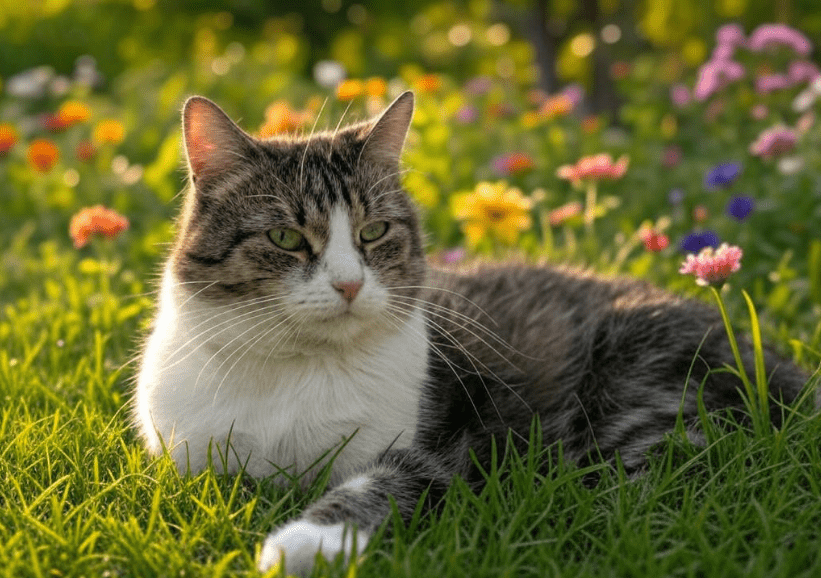
Hygiene Hazards
Dirty Litter Boxes: Can lead to urinary tract infections or stress.
Mold and Dust: May cause respiratory problems.
Standing Water: Attracts bacteria or mosquitoes.
How to Maintain Safety
Clean Litter Boxes Daily: Scoop waste daily and change litter weekly to prevent infections.
Vacuum Regularly: Remove dust, hair, and allergens that can irritate your Ragdoll’s respiratory system.
Use Pet-Safe Disinfectants: Avoid phenol-based cleaners, which are toxic to cats.
Check Water Sources: Ensure water bowls are clean and free of debris. Avoid leaving standing water in sinks or buckets.
Groom Your Ragdoll: Regular brushing reduces hairballs and keeps their coat free of household contaminants.
A hygienic environment supports your Ragdoll’s overall health, reinforcing efforts to protect your Ragdoll cat from household hazards.
Ragdoll-Specific Considerations
Ragdolls have unique traits that require tailored safety measures:
Health Sensitivities: They’re prone to hypertrophic cardiomyopathy (HCM) and urinary issues, so avoiding stress from hazards is critical.
Docile Nature: Their trusting demeanor may lead them to approach dangers without hesitation.
Long Fur: Their plush coats can trap chemicals or small objects, requiring regular grooming.
Work with your veterinarian to identify breed-specific risks and incorporate safety into your Ragdoll’s care routine.
Common Mistakes to Avoid
To effectively protect your Ragdoll cat from household hazards, steer clear of these pitfalls:
Assuming They’ll Avoid Danger: Ragdolls’ curiosity often overrides caution.
Leaving Items Out: Even a single forgotten hair tie can pose a risk.
Using Toxic Cleaners: Always check product labels for pet safety.
Ignoring Small Spaces: Tight gaps can trap or injure your cat.
Skipping Regular Checks: Routinely inspect your home for new hazards.
Why Protecting Your Ragdoll Matters
Household hazards can lead to serious health issues, from poisoning to physical injuries, impacting your Ragdoll’s quality of life. Chronic exposure to dangers may also cause stress, exacerbating conditions like urinary tract issues or HCM. By taking proactive steps to protect your Ragdoll cat from household hazards, you ensure they thrive in a safe, nurturing environment, allowing their loving personality to shine.
Conclusion
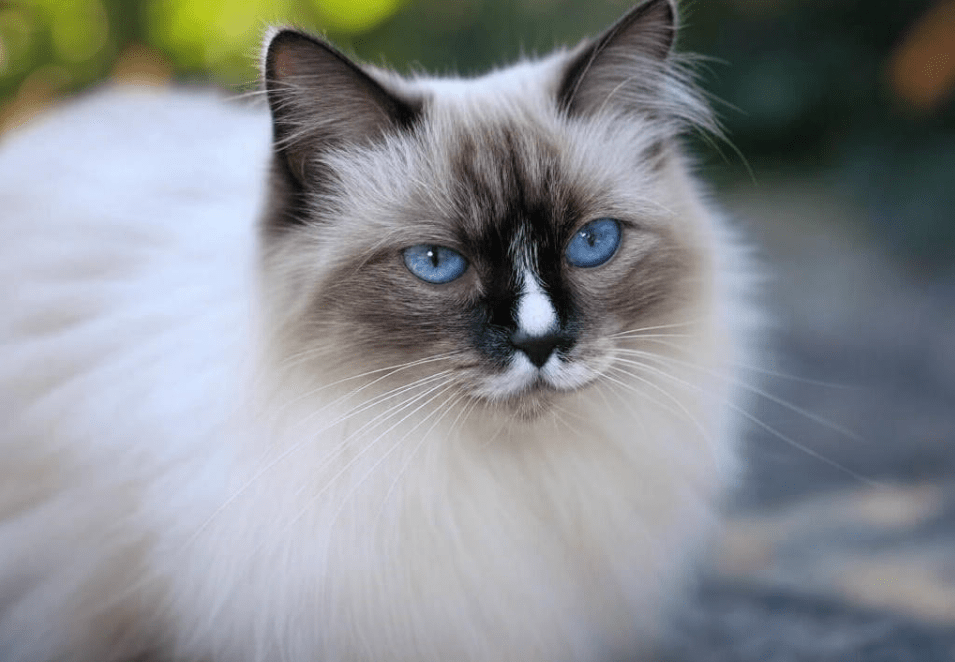
Creating a safe home for your Ragdoll cat is an ongoing commitment that pays off in their health and happiness. By securing toxic substances, eliminating dangerous plants, keeping harmful foods out of reach, cat-proofing electrical hazards, removing small objects, creating safe spaces, and maintaining a clean environment, you can protect your Ragdoll cat from household hazards effectively. Start implementing these seven strategies today to give your Ragdoll the secure, loving home they deserve. With vigilance and care, you’ll ensure your feline companion enjoys a long, healthy life by your side.


